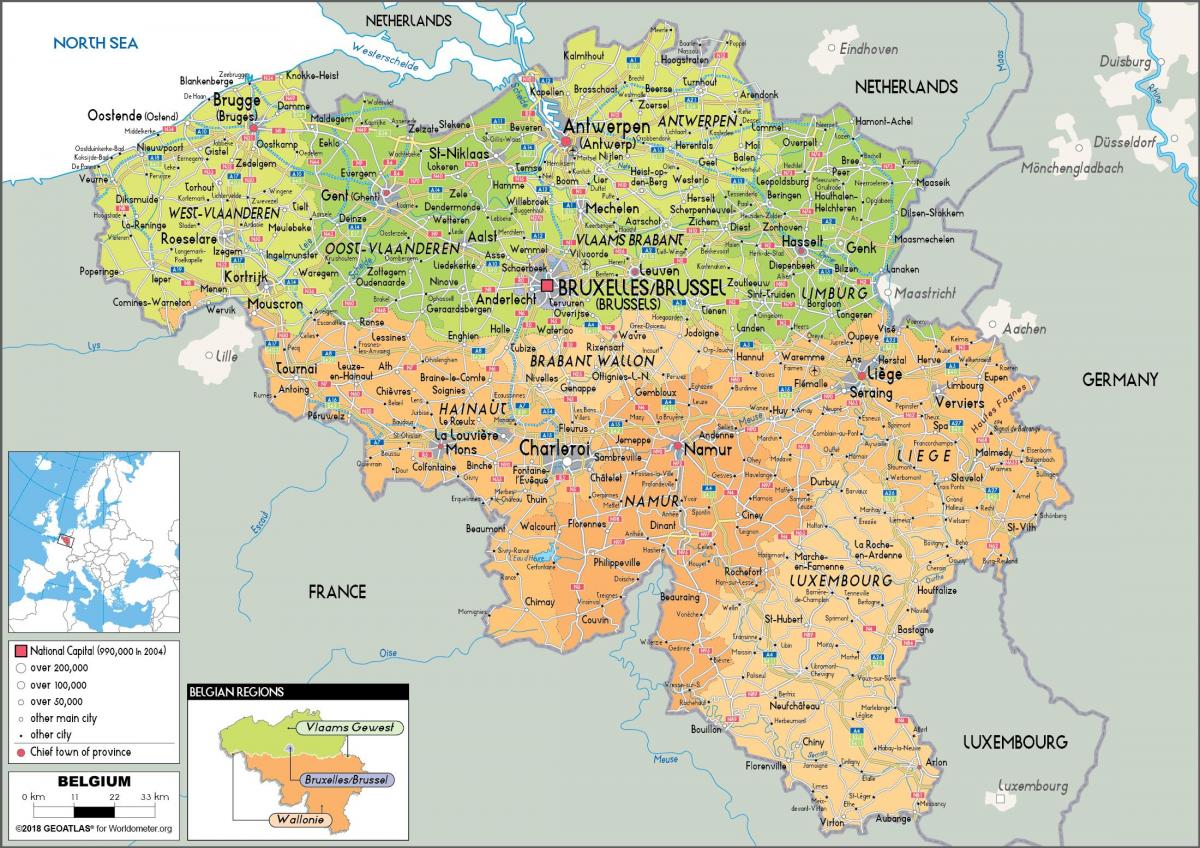search
Belgium map
A map of Belgium. Belgium map (Western Europe - Europe) to print. Belgium map (Western Europe - Europe) to download. Belgium has two types of federated entities: Regions and Communities That is why our state structure is so complicated as its shown in Belgium map. The country was divided into regions and communities because the Flemings and Walloons wanted a federal state for different reasons. Flemish citizens pursued cultural autonomy for all Dutch speakers, as well as for Flemish citizens living in Brussels. That is why three Communities were created: the Flemish Community, the French Community and the German-speaking Community. The word 'community' refers to the population group, which must be able to make decisions independently. The Walloons mainly wanted to pursue their own social-economic policy. For this reason, three Regions were created: the Flemish Region, the Brussels-Capital Region and the Walloon Region. The word 'region' refers to the territory.
Politics of Belgium takes place in a framework of a federal, parliamentary, representative democratic, constitutional monarchy, whereby the King of the Belgians is the Head of State and the Prime Minister of Belgium is the head of government in a multi-party system as its mentioned in Belgium map. Executive power is exercised by the government. Federal legislative power is vested in both the government and the two chambers of parliament, the Senate and the Chamber of Representatives. The federation is made up of (cultural/political) communities and (territorial) regions.
Because of its high population density and location in the centre of Western Europe, Belgium faces serious environmental problems as you can see in Belgium map. A 2003 report suggested that the water in Belgium rivers was of the lowest quality in Europe, and bottom of the 122 countries studied. The environment is exposed to intense pressures from human activities: urbanization, dense transportation network, industry, extensive animal breeding and crop cultivation; air and water pollution also have repercussions for neighboring countries; uncertainties regarding federal and regional responsibilities (now resolved) have slowed progress in tackling environmental challenges.
Despite its political and linguistic divisions, the region corresponding to today Belgium has seen the flourishing of major artistic movements that have had tremendous influence on European art and culture as its shown in Belgium map. Nowadays, to a certain extent, cultural life is concentrated within each language Community, and a variety of barriers have made a shared cultural sphere less pronounced. Since the 1970s, there are no bilingual universities or colleges in the country except the Royal Military Academy and the Antwerp Maritime Academy, no common media and no single large cultural or scientific organisation in which both main communities are represented.
Folklore plays a major role in Belgium cultural life as its mentioned in Belgium map: the country has a comparatively high number of processions, cavalcades, parades, 'ommegangs' and 'ducasses', 'kermesse' and other local festivals, nearly always with an originally religious or mythological background. The Carnival of Binche with its famous Gilles and the 'Processional Giants and Dragons' of Ath, Brussels, Dendermonde, Mechelen and Mons are recognised by UNESCO as Masterpieces of the Oral and Intangible Heritage of Humanity.


